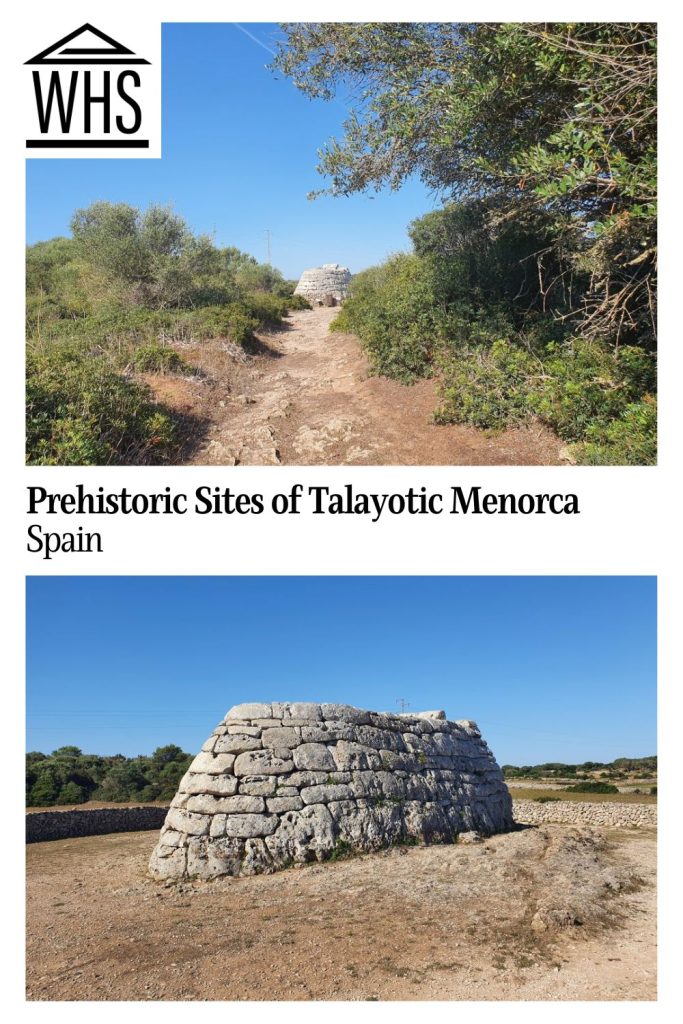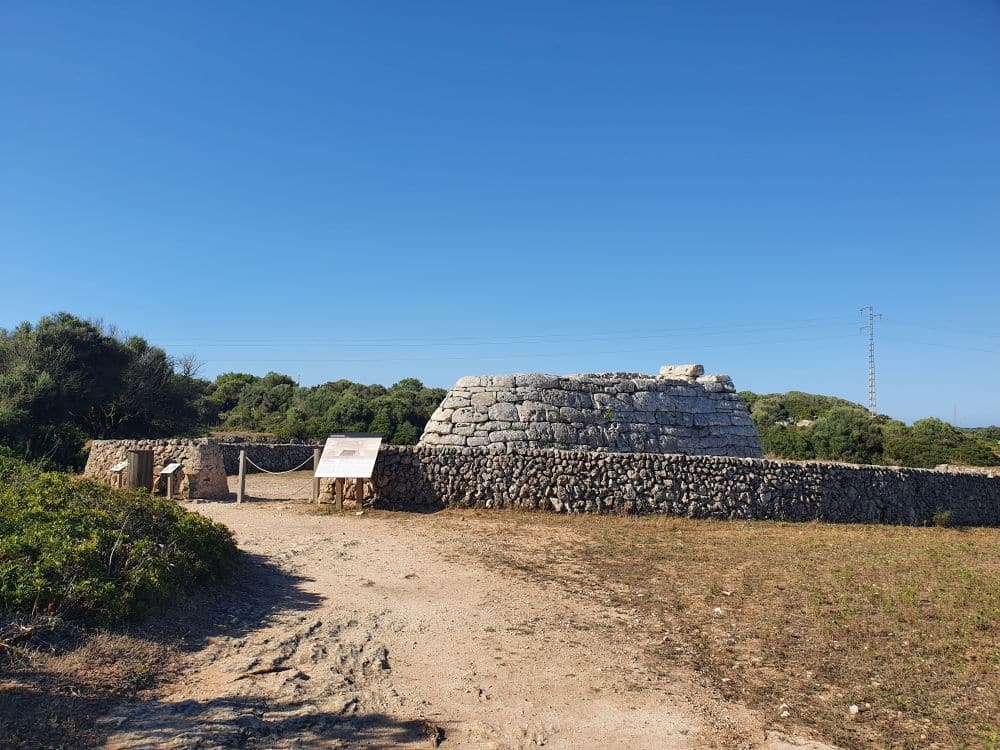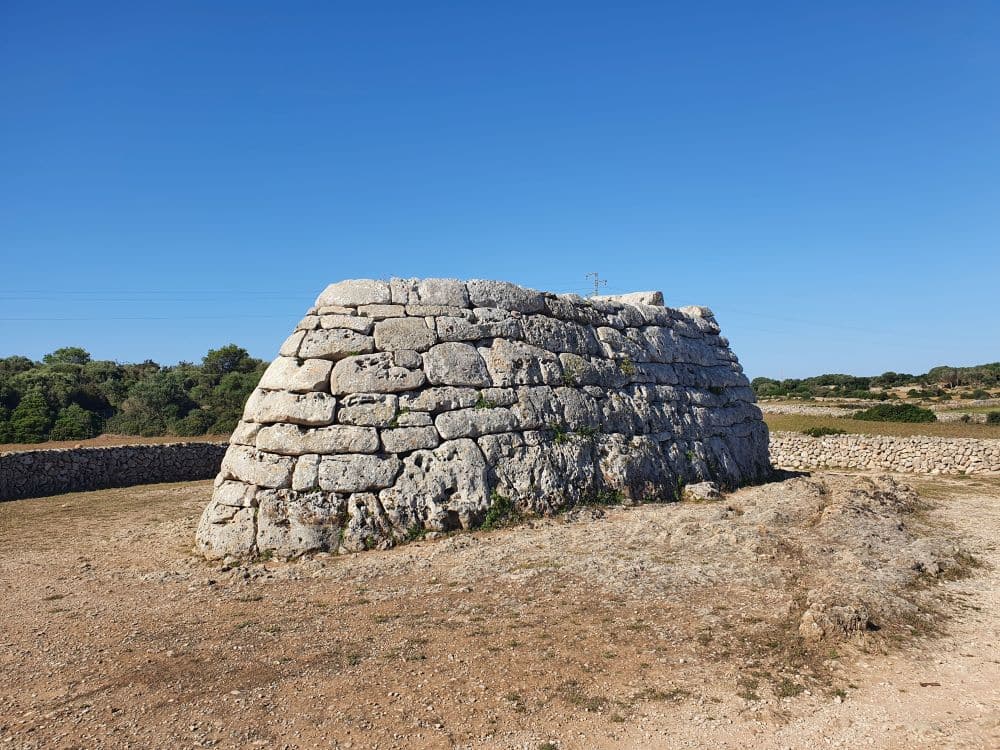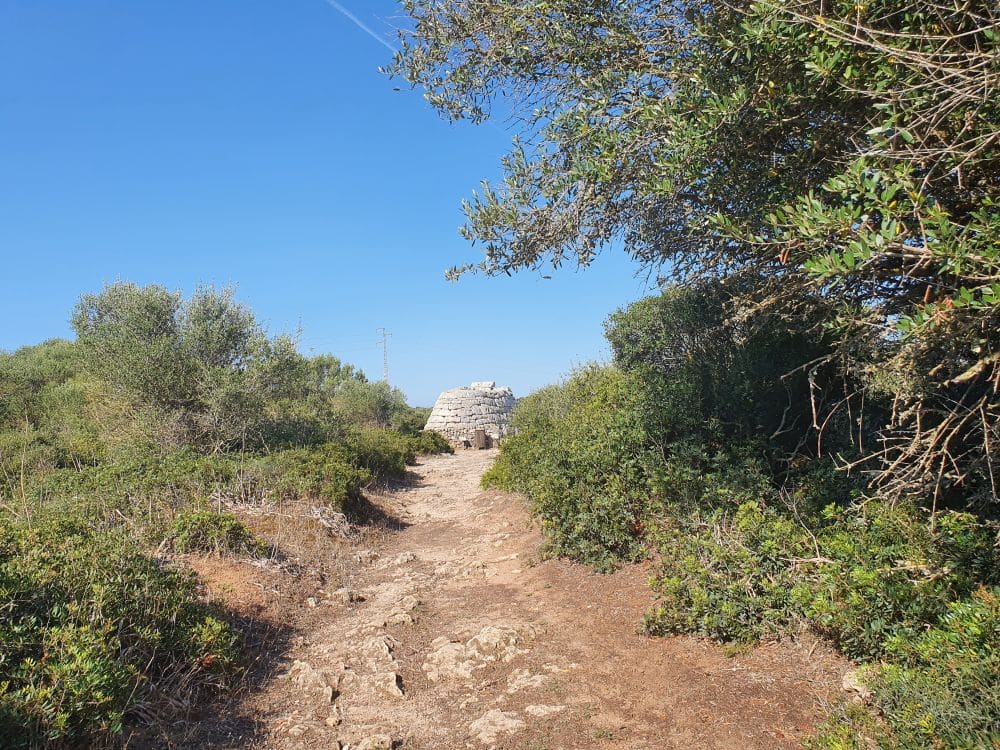Talayotic Menorca
By Jill
What is Talayotic Menorca?
Scattered across the Balearic Island of Menorca, you can find numerous archaeological sites that feature cyclopean structures (“Cyclopean” means it’s made with large irregular blocks.) dating from the Bronze Age (1600 BCE) to the Late Iron Age (123 BCE). While there are 1600 prehistoric sites on the island, nine groupings are components of the UNESCO serial property.
Disclosure: This article contains affiliate links. Making a purchase through an affiliate link will mean a small commission for this website. This will not affect your price.

Why is Talayotic Menorca a UNESCO World Heritage site?
According to UNESCO’s site, “the high density of prehistoric sites on Menorca and their unusual level of preservation represent an outstanding demonstration of prehistoric dry stone building techniques”.
Furthermore, UNESCO states that “Talayotic Menorca represents an outstanding ensemble of prehistoric cyclopean architecture that demonstrates the organisation and practices of communities from the Bronze Age through to the Late Iron Age.”
Besides, those stone structures are unique to Menorca, so they cannot be found anywhere else in the world.

What can you expect on a visit to these prehistoric sites?
When driving around Menorca you will pass by many of these archaeological sites. Many of them are free to enter. Usually you will find a parking lot right next to the site.
You can find remains of settlements of which you can still see the stone walls such as Trepucó settlement, Torralba d’en Salort, and the Circular houses of the settlement of Torre d’en Galmés.
Some, on the other hand, are burial chambers, such as the Talayot of Torelló or Es Coloms cave. They look similar to a pyramid, but in a rounder shape like a stone version of the hull of a ship upside-down.

What follows is only a selection of the most significant sites, most of which are within the UNESCO groupings. There are many more, all over the island.
- Naveta des Tudons tomb: a funerary structure, shaped like an upside-down ship.
- Talatí de Dalt: includes a stone monument, a talayot (megalith), and ruins of early homes.
- Ses Paisses: a talayot with a large wall around it and ruins of houses.
- Talaiot Capocorp Vel: ruins of a village of 28 houses with five talayots.
- Talayot de Torelló: a tall talayot.
- Cala Morell Necropolis: 17 artificial caves used for burials, and a few dwellings.
- Torre d’en Galmés: three talayots and a taula (a stone shrine), along with the ruins of a small town.
- Torre del Ram Hypogeum: a funerary monument with engravings inside.
- Navetas de Rafal Rubí: stone-built tombs (called navetas).
- Western Talaiot at Cornia Nou: a conical-shaped talayot with a stairway up the side.
- Es Castellàs des Caparrot de Forma: a necropolis of 23 caves and a wall.
- Necropolis of Calescoves: a necropolis of about 90 artificial caves.
- Son Mercer de Baix: navetas used as dwellings.
- Sant Agustí: two talayots, one of which still has its wooden beams, plus a few dwellings.
- So na Caçana: a taula and two talayots, plus dwellings and a necropolis.
- Son Catlar: a very large settlement with an intact outer wall and three talayots.
- Talayotic settlement of Torralba d’en Salort: a very large settlement, with a particularly impressive taula.

Are these sites worth visiting?
These sites are definitely worth a visit. Menorca has the world’s highest density of prehistoric sites. So seeing Menorca is never complete without visiting at least some of its historic sites.
What sorts of travelers would like these prehistoric sites on Menorca?
A visit at one of the Talayotic Menorca sites can be exciting to all kinds of travelers who are interested in history. Even if you’re on Menorca mainly for a beach holiday, you shouldn’t miss visiting at least one of its historic sites.
Use the map below to find accommodations on Menorca. Zoom out to see all the options on the island.
Tips for visiting the Talayotic Menorca sites
As it can get really hot in Menorca, go early in the morning or in the late afternoon, when the sun is not in its peak. It can be helpful to wear proper shoes, as there are usually no paved pathways.
Many of the ruins are open all the time and there is no admission charge. Others, though, charge a small admission fee and only have very limited opening hours on only one or two days of the week. Check the Talayotic Menorca website to find out what days each one is open.
Take a private half-day tour that includes a few of these prehistoric sites.
Or this full-day group tour, which includes one of the sites.
If you’re going to be traveling elsewhere in Spain, consider visiting some of its many other UNESCO sites.
Where are the Talayotic Menorca sites?
You can find the sites spread all over the Balearic island of Menorca in Spain. However, many of the larger sites are in the southern part of Menorca. You can easily reach them by car from Mahón in the east, as well as from Ciutadella in the west. As the island is small, most of the sites can be reached within 10 – 30 minutes by car from either of the towns.
Compare rental car prices in Menorca.
For more information about Talayotic Menorca, see the official website of Menorca Turismo.
Have you been to Menorca? If so, do you have any additional information or advice about this UNESCO World Heritage site? Please add your comments below!
